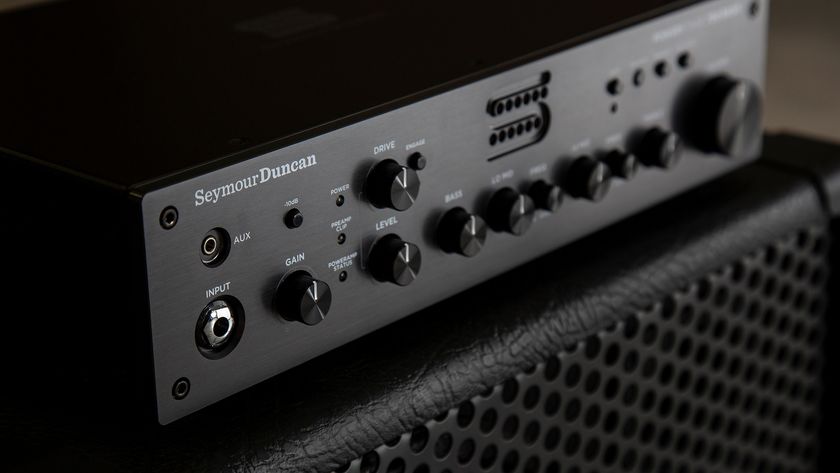“Eric Clapton, Mark Knopfler, Ry Cooder, Stevie Ray Vaughan, Jeff Healey and Buddy Guy... I naturally gravitated towards a Strat because my main influences were all playing them”: Philip Sayce on why the best studio magic is live
Returning with new solo LP The Wolves Are Coming, the blues ace discusses big studio energy during downtime for the world, his enduring guitar heroes, and his exacting standards for the Strat

After the release of his seventh solo record, Spirit Rising, in 2020, Philip Sayce took to the internet to promote it in lieu of being able to play live during the pandemic. Incredibly, and in no doubt due to a very faithful fanbase, the album received more than 13 million streams on Spotify.
Now, with business relatively back to normal, Philip’s return to the live stage finds him at the top of his game. Furthermore, a new studio album waits in the wings. We took the opportunity to chat with him via a Zoom call to his home in LA to find out what went into the making of The Wolves Are Coming.
The writing for the new album would have been during the Covid era. How did you organise your time?
“It was definitely an opportunity to pause and regroup, take stock and really work my ass off during lockdown. I just said, ‘There's nothing going on. There's no live shows happening. Everything is on hold. So I'm going to plan out my day accordingly: I'm going to take three hours in the morning to practise, then I'm going to do a couple hours in the afternoon of writing, then I'm going to come back and practise a little more.’ I just pushed myself to train and use the time as focused practice.”
Did you have material written prior to that or did you start writing with a clean slate?
“You know, both are true. Some ideas had been started some time ago and maybe not finished. During the pandemic I had time to go through the old sock drawer and see what was in there. Occasionally, I’d find something that was like, ‘Well, how come I never worked on that one?’ And then I sort of reworked it and brought it into life. Other things were totally brand-new ideas.”
What is your writing process – does it start with a riff or some kind of melodic idea?
Get The Pick Newsletter
All the latest guitar news, interviews, lessons, reviews, deals and more, direct to your inbox!
“I try not to go by any rules – and that’s one of the things I love about music and the arts in general. A lot of times it's a case of ‘choose your own adventure’, really; you're improvising in the moment. So I think I don't necessarily have a one-size-fits-all approach.
“However, that being said, most times, I'll come up with some type of a riff or a chord progression and hear a melody over it. Then I'll hum it into my phone and keep it as an idea. I'll title it, you know, whatever I'm going to call it for that particular day, and then come back to it, if I don't finish it in the moment.”
There's something that happens to me, when I hear those artists you just mentioned – I mentioned Trower, but all of them – it's like a chest is heaving, something is moving when that music is on
Listening to the new album, we’re hearing classic rock era influences – Robin Trower, Hendrix, Zeppelin…
“Oh, yeah. Let's say Robin Trower, for instance. When I hear live recordings of those guys in the mid-’70s, or even around the Bridge Of Sighs era, [it’s like] there's something about the earth under my feet moving. It's breathing. It's like, something is very moving about the expression and the intention in that music.
“And, regardless, if it's something that I like or not, there's something that happens to me, when I hear those artists you just mentioned – I mentioned Trower, but all of them – it's like a chest is heaving, something is moving when that music is on. So yeah, I'm trying to take a page out of that book.”
What gear did you take into the studio with you this time?
“The amps were my favourite [Fender] Super Reverb, which I've had for many years, and a couple of others: a César Diaz and some Tommy Cougar amps. It’d be changing daily for whatever session we were in: ‘Let's try this, this time…’ or, ‘Let's pair these two or three together.’
“It was mostly three guitars, so it would have been either one of my ’63 Stratocasters and then I also have a mid-’60s Gibson SG Junior, which I used quite a bit. Then I used a Mule resonator on a couple of tracks. A Fender Vibratone, or Lesley, on a couple of things, obviously – you know, hearing that great sound Stevie Ray had when he used those and trying to get a little of that flavour in there. And the same pedals that I use in a live setting: old Fuzz Faces or old wah-wah pedals or César Diaz pedals.”
When you made the album, did you record ‘live’ with the band in the studio?
“Yeah, my approach is to record as live as possible to try to capture the excitement of that moment – and before you've played it 30 times, you know? You want to get it before you've overdone it. Sometimes, in the first few takes there's an excitement and a charge, like, ‘Wait a minute, what's the next chord?’
“It has to have an energy about it and so I try to be mindful of that type of approach. Sometimes the song requires being done 30, 40 times – it depends on the particular track. But for the most part, approaching things from a live and human standpoint is what I enjoy in the studio.
Sometimes the song requires being done 30, 40 times – it depends on the particular track. But for the most part, approaching things from a live and human standpoint is what I enjoy
“The Wolves Are Coming was recorded in a number of different sessions. Due to the pandemic, we would go in for two or three days at a time. ‘Okay, great, what did we get? We got three songs in three days this time. Okay, good. Are they all gonna make it? Two of the three are good. Okay, cool. Maybe I need to rewrite that lyric, you know, or rewrite a bridge.’
“I would go in with Mike Leasure to play drums; he’s a dear friend and a phenomenal drummer. He's been playing with Walter Trout for the last 15 years or something. But he and I go back a long time and we’ve played a lot of shows together. So he came into the studio, just the two of us on the floor recording live, and Mark Rains was our engineer.
“We recorded stuff live, then I went back and overdubbed bass, and then we would overdub some vocals and whatever else needed to be done, but the core of the music was done live.”
Do you use your SG Junior live?
“Yeah, I have used it live. I've had that guitar for many, many years. But I don't bring it out as much as the Strats or the Paul Reed Smith Silver Sky that I’ve been playing. The reason for that is the Strats – or Strat-style guitars – are a little tougher. When those Gibsons fall down, those headstocks come off, and I don't want to see that happen.”
What was the attraction to the Stratocaster in the first place?
“It came from my parents. Growing up and hearing my parents’ music collection and watching videos and dancing around the house playing air guitar on a tennis racket… It was Eric Clapton, Mark Knopfler, Ry Cooder, Stevie Ray Vaughan, Jeff Healey and Buddy Guy and all of these players. It was really the soundtrack of what I heard growing up, and so I naturally gravitated towards a Strat because my main influences were all playing them.”
Are your Strats stock or have you had any work done on them?
“For the most part, they’re stock. I do a few things to them – not myself because I am a bit of a Neanderthal when it comes to guitar work, but I can do basic things. I usually get the frets changed out for some larger ones, but, other than that, it's all just personal taste in terms of adjusting the height of the pickups and so on. I like to keep the original pickups on the old guitars, if they sound good. It’s really frets that are the main thing.”
I want all three [pickups] to be just right. I don't want to cringe if I go to any of them. I want them to all be so that I could land on any of them and feel real good about it
Do you still have the three-way switches on your ’60s Strats or have you fitted five-way pickup selectors?
“I’ve upgraded them to five-way. On my Strat that's called ‘Big Daddy’, I put in a five-way last year as the three-way was starting to get a little worn out. I'm very, very picky; I want all three [pickups] to be just right. I don't want to cringe if I go to any of them. I want them to all be so that I could land on any of them and feel real good about it. Or feel inspired by the sound. That being said, I'm usually a neck pickup guy, I think, right?”
Are you looking forward to more live work to promote the new album?
“We just got home from a tour through the UK, which was awesome. We had a good time. It was such a pleasure and a privilege to have the opportunity to return to the UK to perform. It had been a while. So we are in the process of booking our return dates.
“The album comes out at the end of February. I mean, I'll be practising every day, irritating my neighbours! But, other than that, we'll be getting going in the first quarter of the year – I think [there are] some European dates, May into June, and then we'll be back over in the UK for a tour later.”
- The Wolves Are Coming is out now via Forty Below.
With over 30 years’ experience writing for guitar magazines, including at one time occupying the role of editor for Guitarist and Guitar Techniques, David is also the best-selling author of a number of guitar books for Sanctuary Publishing, Music Sales, Mel Bay and Hal Leonard. As a player he has performed with blues sax legend Dick Heckstall-Smith, played rock ’n’ roll in Marty Wilde’s band, duetted with Martin Taylor and taken part in charity gigs backing Gary Moore, Bernie Marsden and Robbie McIntosh, among others. An avid composer of acoustic guitar instrumentals, he has released two acclaimed albums, Nocturnal and Arboretum.
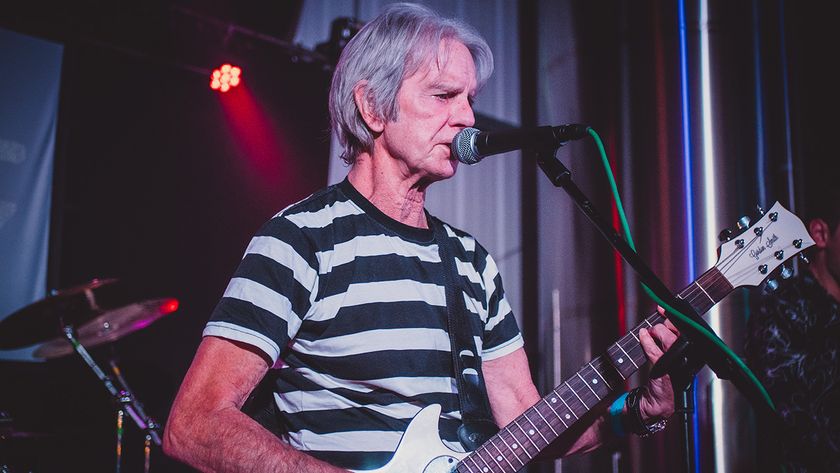
“I get asked, ‘What’s it like being a one-hit wonder?’ I say, ‘It’s better than being a no-hit wonder!’” The Vapors’ hit Turning Japanese was born at 4AM, but came to life when two guitarists were stuck into the same booth
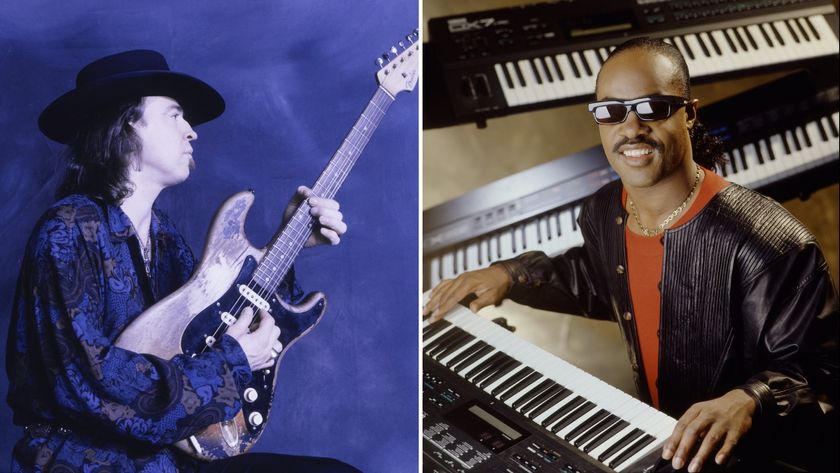
“Let's play... you start it off now, Stevie”: That time Stevie Wonder jammed with Stevie Ray Vaughan... and played SRV's number one Strat

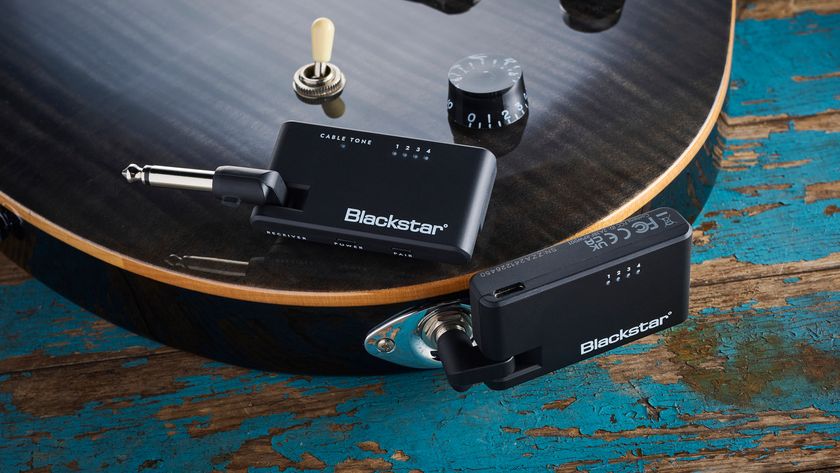
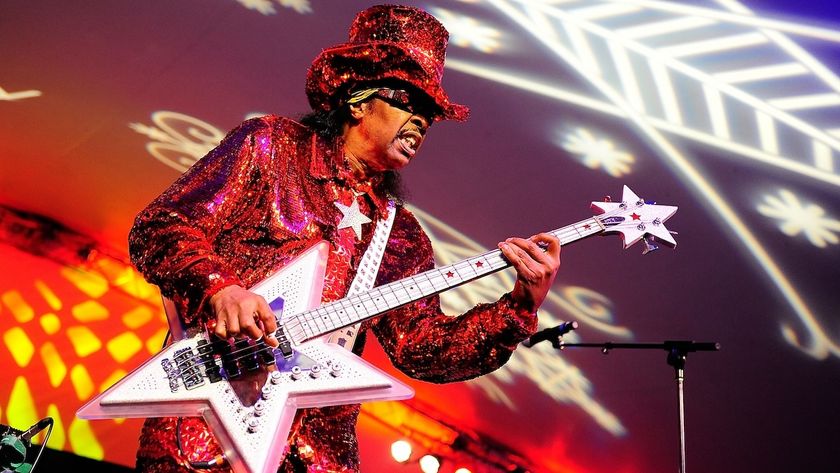


![[L-R] George Harrison, Aashish Khan and John Barham collaborate in the studio](https://cdn.mos.cms.futurecdn.net/VANJajEM56nLiJATg4P5Po-840-80.jpg)
